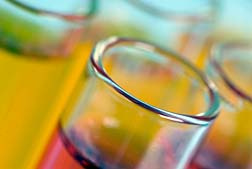What also needs to be answered is why the counterfeit was used in the first place. Why, and how?
 "The greatest question of all, however, is what to do about the reality that the majority of the world's heparin supply comes from China—a country that has already been found to be suspect in several instances regarding tainted drugs and consumer goods.
"The greatest question of all, however, is what to do about the reality that the majority of the world's heparin supply comes from China—a country that has already been found to be suspect in several instances regarding tainted drugs and consumer goods.And how is this situation to be rectified if the US Food and Drug Administration (FDA) continues to be under funded, and denied the resources and reformation needed to adequately respond to the perpetual increase of prescription drugs, and raw materials coming into the country from distant shores?
As it was, the mystery substance—over-sulfated chondroitin sulfate—escaped detection when normal testing methods were used. It wasn't until the FDA undertook more sophisticated testing methods that the counterfeit ingredient was even noticed at all, let alone identified.
That would also explain why random tests of heparin coming in from China have not been singled out in the past.
Over-sulfated chondroitin sulfate has been described as a modified version of a substance derived from shark, squid and other fish and used normally for the treatment of joint pain.
The latter in its normal form—chondroitin sulfate—has been identified as being structurally similar to heparin and shares some of the blood-thinning properties that heparin presents. However, it is definitely not heparin, and neither is the modified version known as over-sulfated chondroitin sulfate. The latter is not approved for any purpose in the United States, and certainly should not be found in heparin, regardless of its capability to mimic the real thing, for any reason.
Previous reports had suggested that lots of tainted heparin tested with as much as 20 per cent of the heparin volume represented by the over-sulfated chondroitin sulfate mimic.
However, more recent reports increase the ratio to 50 per cent, in some cases. With only half of a heparin injection the real thing and the other half a potential heparin mimic structurally similar to heparin but not spot-on, the threat to a human with such a mixture coursing through the veins is palpable. The body's response to this modified chondroitin sulfate, and how it interacts when mixed with heparin in the human body, remains a huge unanswered question.
Over the last several weeks two major companies have recalled virtually their entire heparin product sourced back to an American-controlled factory in China, Changzhuo SPL, which has been linked to the tainted heparin. Now comes the task of definitively determining the supply chain to the factory. China is home to a huge cottage industry of raw heparin houses, which prepare crude heparin from the intestines of pigs.
Much of the heparin industry in China is not regulated. Others escape regulation with registration as a chemical entity, rather than a manufacturer of drugs.
For now, it appears as if the Chinese authorities are co-operating with US officials in an effort to determine the source, and the reason for the contamination. Owners of other regulated factories in China are reporting impromptu visits from Chinese health authorities as the latter attempts to verify the safety and efficacy of the status quo.
However, the same cannot be said for the unregulated sources, which reports suggest number into the thousands. How China manages to address that situation, if it's even possible, is the subject for much debate.
In a perfect world, whatever is determined to be the cause of the heparin contamination would be dealt with, and anything and anyone falling through the regulatory cracks would be fixed. Together with ongoing scrutiny on the part of both Chinese and American officials, no less a response will be required to assure that the majority of the global supply of crude heparin, assuming it continues to originate from China, is deemed safe.
However, any American injured by tainted heparin, or any American having lost a loved one to contaminated heparin from China, will be hard pressed to find one entity to blame.
There are so many...
READ MORE LEGAL NEWS
Beyond that, however, is the reality that medicinal exports from China and other offshore ports have snowballed, but the FDA can't appear to, or hasn't been given the resources from Congress, to keep up. As it is, the Changzhuo SPL plant in China was never inspected by the FDA prior to beginning heparin operations in 2004, a contravention of the FDA's own policy.
Who to blame, therefore? The FDA? Congress? The pharmaceutical companies? China?
All of them.
When it comes time to sue, it's a case of eenie, meenie, mynee, moe...
